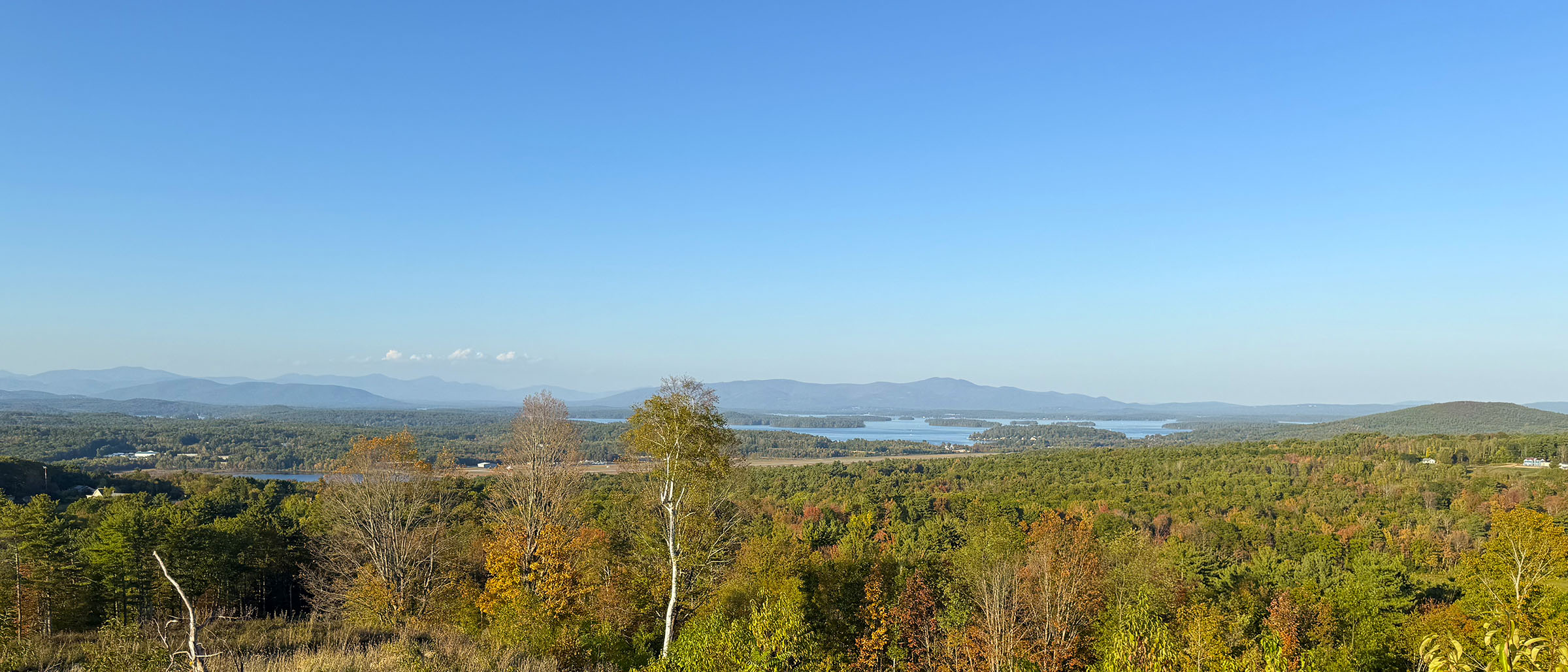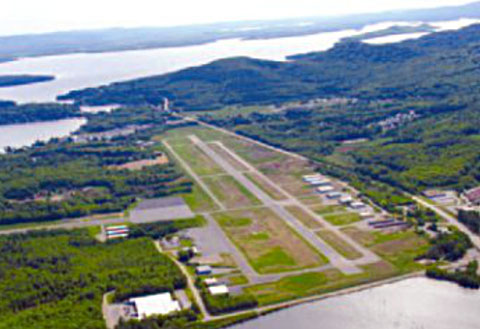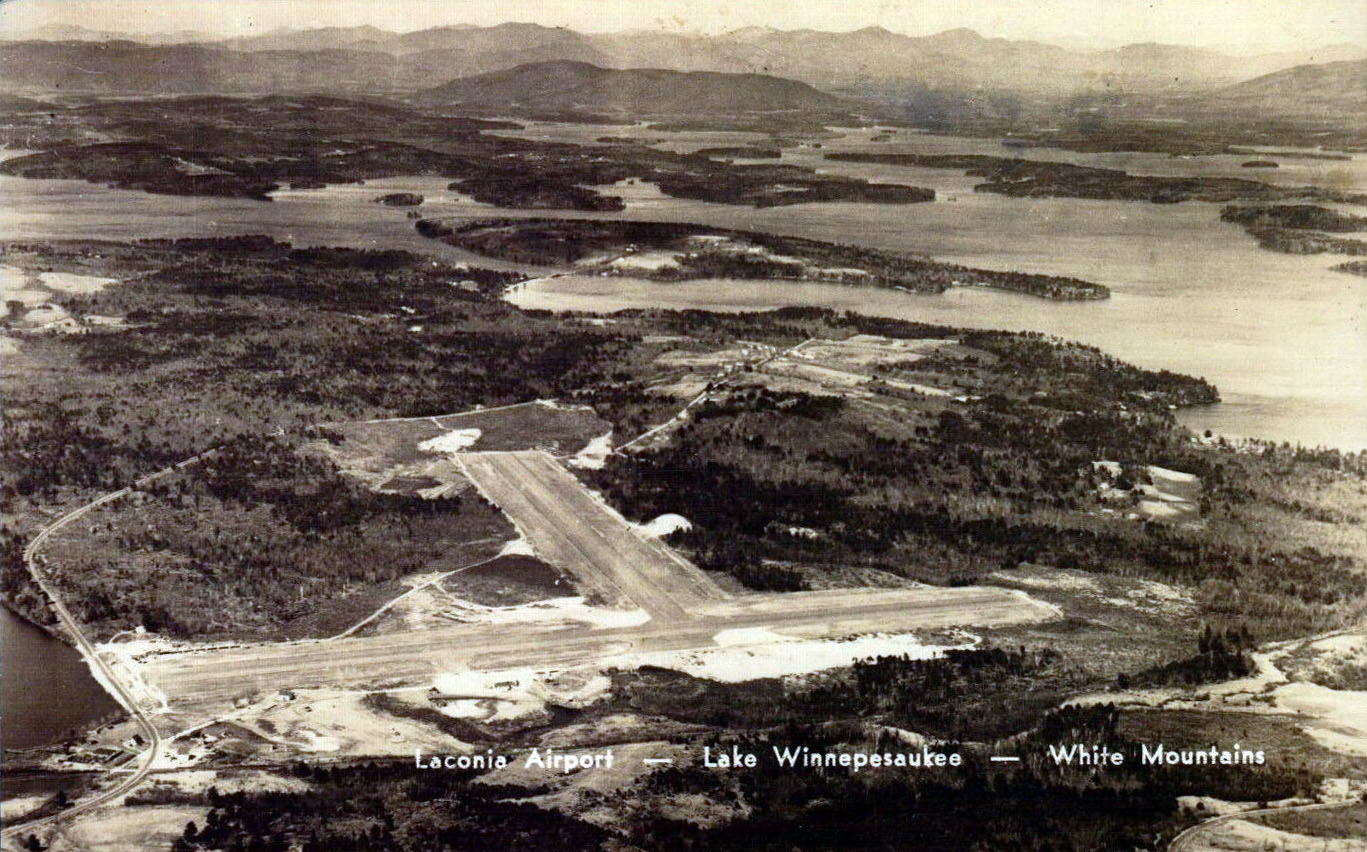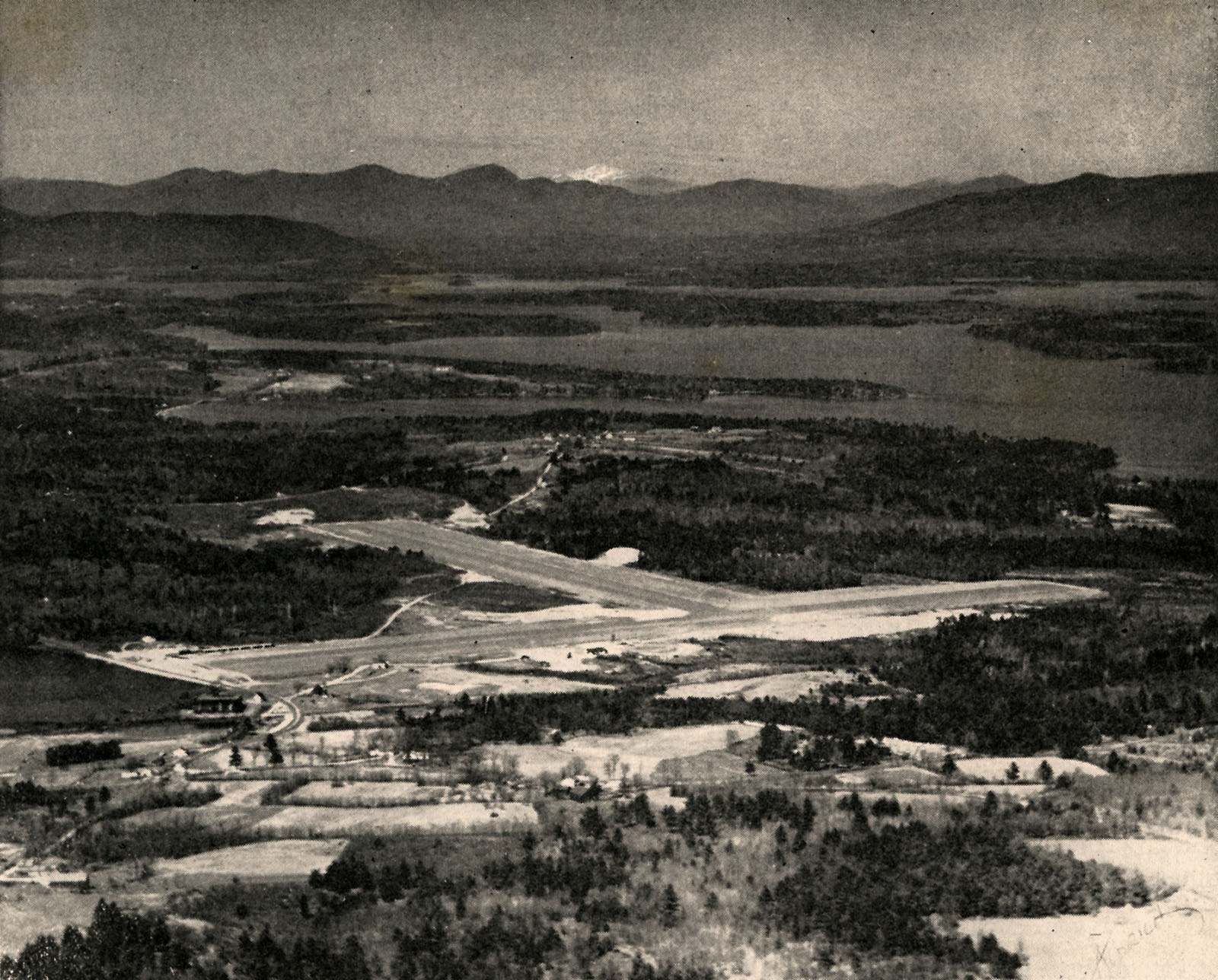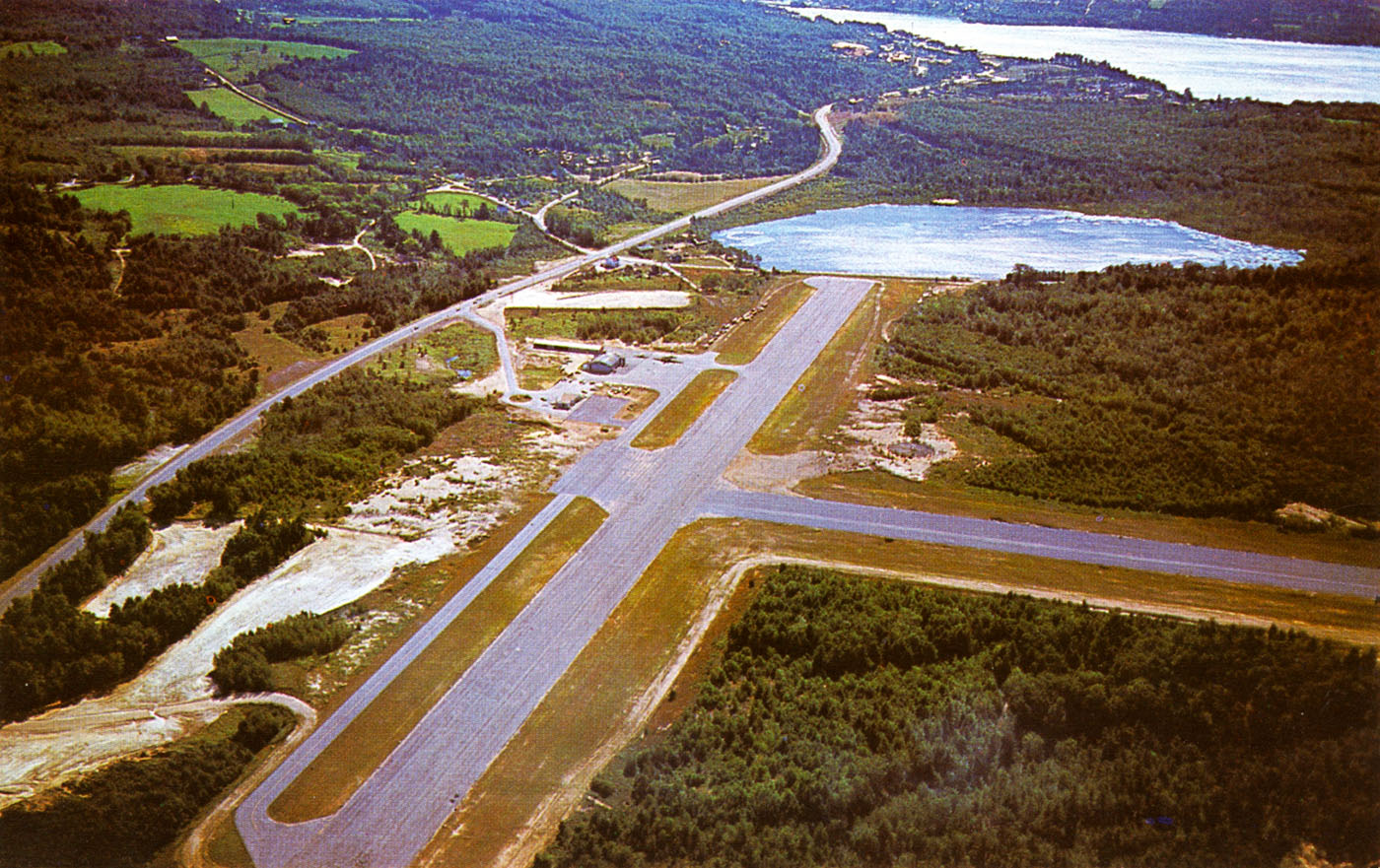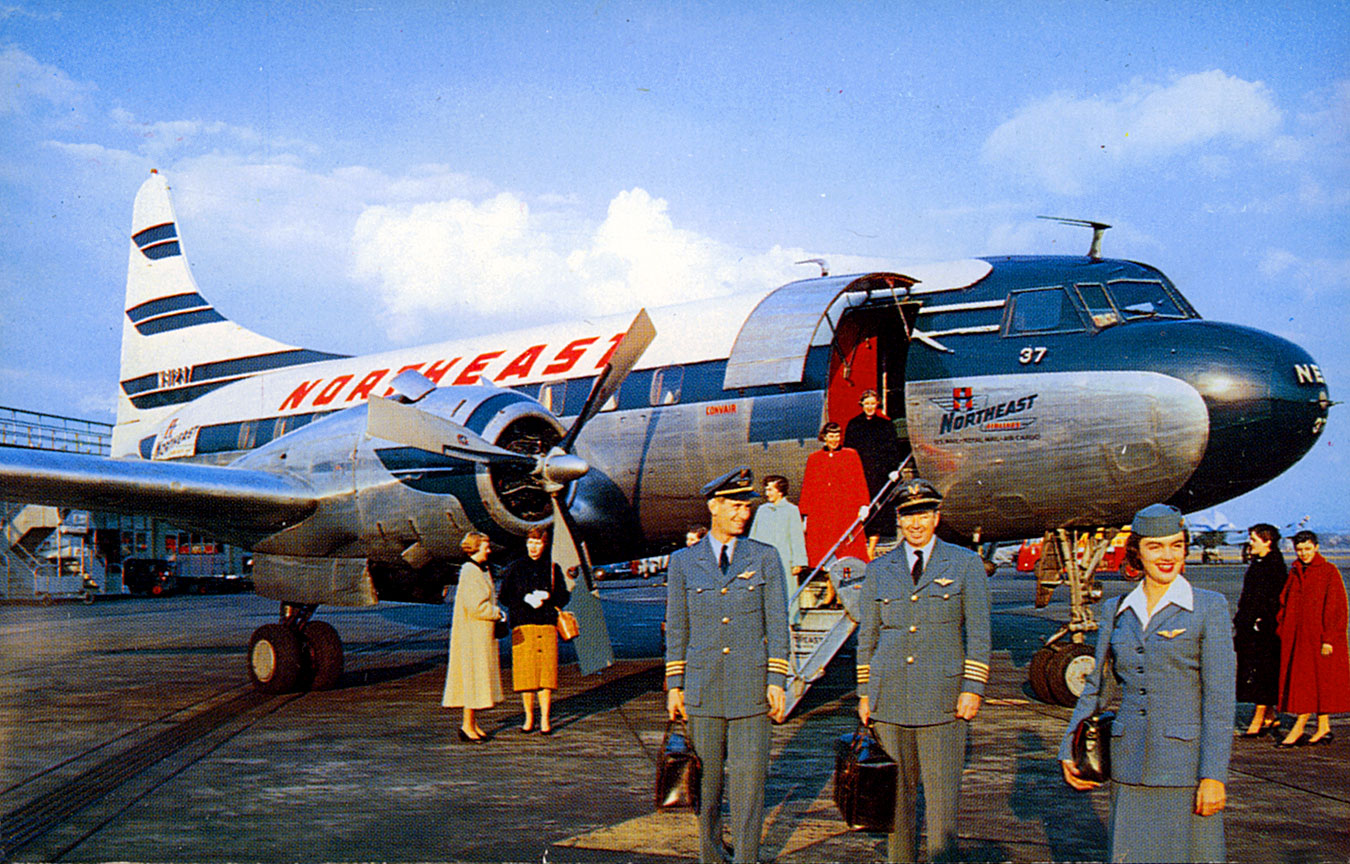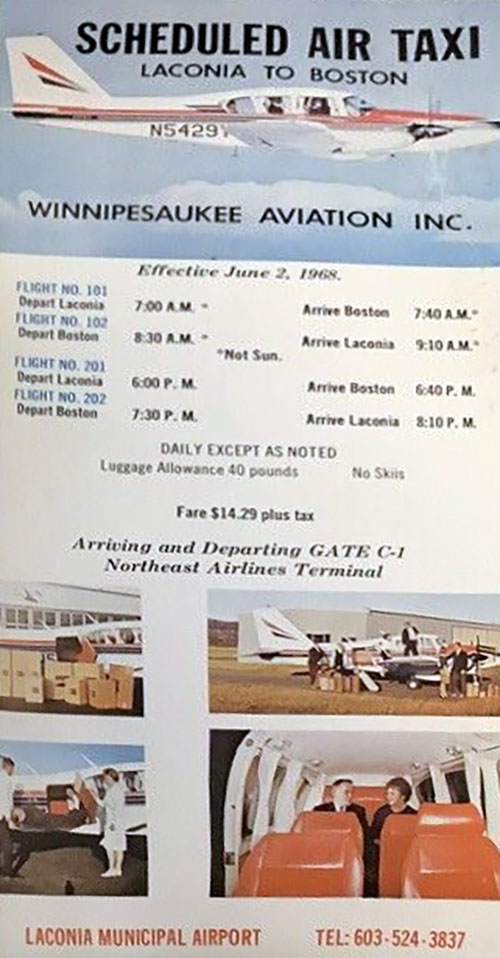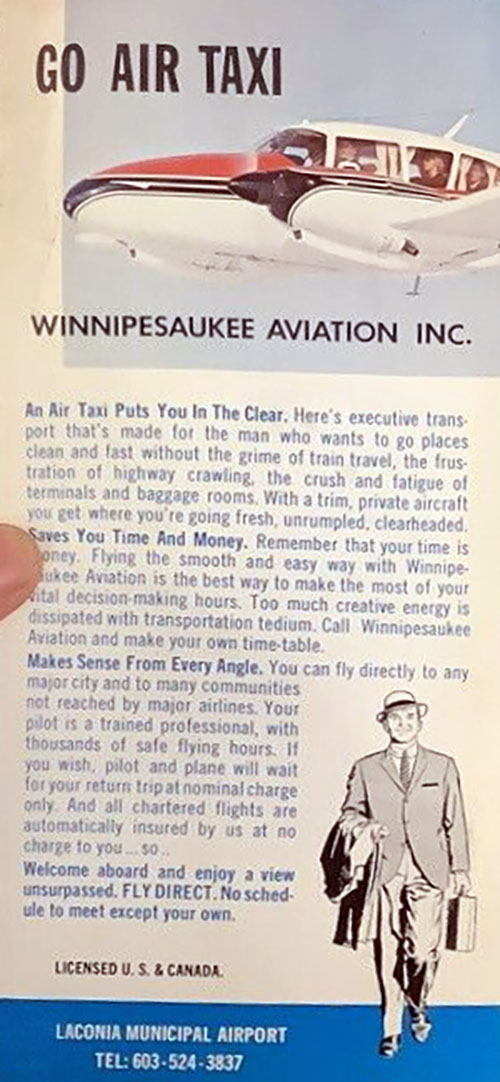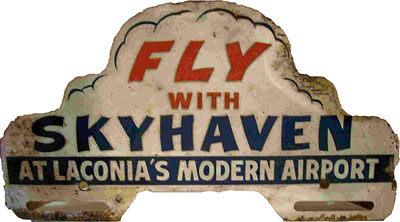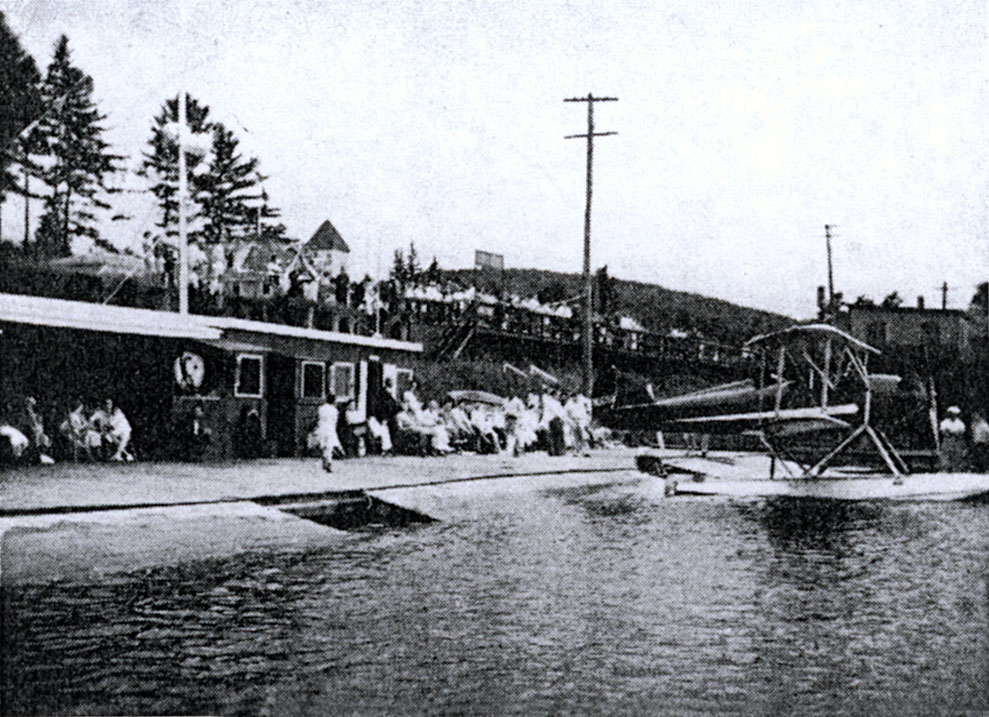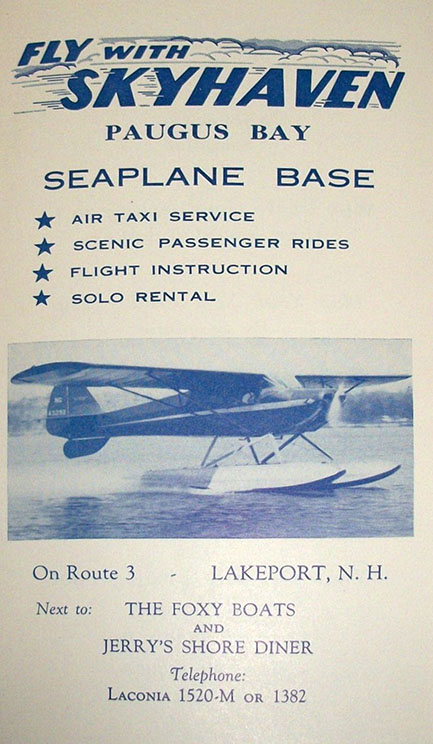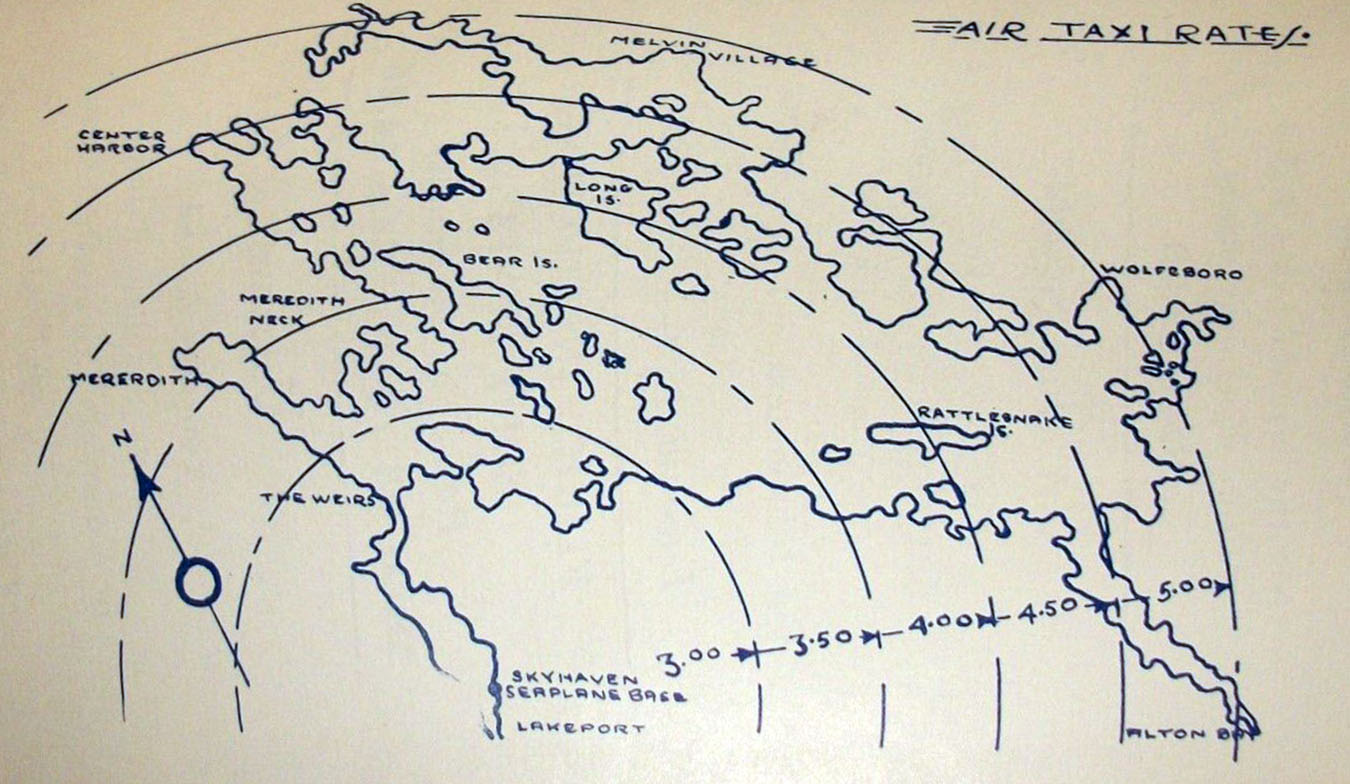Travel by Plane
What is the quickest way to get to Weirs Beach?
Unfortunately, Laconia’s airport is now considered too small to sustain commercial airline service, although at one time, numerous flights a day left Laconia for Boston and other regional airports. Please check out the historical section below for more information.
If you are flying into New England, consider making your destination the Manchester–Boston Regional Airport, rather than Boston’s Logan International. You’ll find a modern, comfortable airport, featuring several major commercial airlines. Manchester is an hour closer to Weirs Beach than Boston. Photo of Manchester-Boston Regional Airport ©Yahoo Maps.
Whether flying into Manchester or Boston, you can get door-to-door service to any place in Weirs Beach (or the Lakes Region) with the LRST Airport Shuttle Service (603) 286-8181.
HISTORY OF THE LACONIA AIRPORT
A mid-1940s aerial view of the Laconia Airport. In this aerial view, the East-West runway runs from left to right. The back of this postcard read, “SKYHAVEN, INC., operating Laconia’s Modern Airport, provides friendly facilities in the heart of New Hampshire’s summer and winter playground.” Skyhaven Aviation was the first commercial operator at the airport.
In 1934, the original Laconia Airport was built in the vicinity of what is now the O’Shea Industrial park. The current airport was started in Gilford in January, 1941, with funding from the WPA (Works Progress Administration), the City of Laconia, and Belknap County. The City and County paid for the purchase of 439 acres of land, while the WPA paid for the construction of the airport. The airport served as an emergency landing field and military training center during WWII. The two runways that were built were completed in 1943.
The North-South runway, numbered Runway 17-35, was 150′ wide by 3500′ long. In 1976, Runway 17-35 was closed permanently. The reason for the closure was that the approaches could not be maintained, and the runway could not be extended to meet modern standards.
The East-West runway, numbered 8-26, was also originally 150′ wide by 3500′ long. With 1000′ length-wise extensions in 1963, and then again in 1965, the East-West runway became the primary, and then the only, runway at the airport. The current dimensions of the East-West runway are 100′ wide by 5890′ long. The number 8 is still marked large on the tarmac at the Eastern end of the runway, near Lily Pond; while the number 26 still marks the Western approach.
A mid-1950s aerial view of the Laconia Airport. Lily Pond lies at the end of the East-West runway and Paugus Bay just beyond. Judging by the frozen surfaces of Lily Pond and Paugus Bay, but the greening lawns, the photo was probably taken in mid-April.
The caption on the back of the above postcard read “Laconia, N.H. Airport. Elev. 550′ – 2 3500′ Hard surface Runways, 8/26 lighted dusk to dawn, ADF approach, Unicom, 80-100 octane gas, A & E, Flight Examiner, Sales, Service, Rentals. Lounge Rooms and Restaurant.
Automatic direction finding (ADF) is an electronic aid to navigation that identifies the relative bearing of an aircraft from a radio beacon. A UNICOM station is an air-ground communication facility operated by a non-air traffic control private agency to provide advisory service at uncontrolled airports and to provide various non-flight services, such as requesting a taxi. A&E stands for Aircraft and Engine, a term used to refer to aircraft and engine maintenance and repairs. A Flight Examiner is a senior pilot designated by the FAA to conduct oral examinations and inflight checkrides with pilot applicants to determine their suitability to be issued a Pilot Certificate or additional rating.
Regular passenger air service began at the Laconia Airport on June 2, 1950, with flights to New York, Boston, and Worcester. Northeast Airlines (see above photos) was the original carrier. Its 24-passenger, DC-3 airliner landed at the airport at 10:10 am, and was greeted by more than 500 residents of the city and region. The airline had been started by the Boston & Maine Railroad in 1931 as B&M Airways. In November, 1940, the airline’s name was changed to Northeast Airlines. In January, 1944, the Civil Aeronautics Board forced the B&M to sell their shares in the operation and Northeast became an independent airline. Northeast offered regular air service to and from Laconia until 1969, when Winnipesaukee Airlines took over. In August, 1972, Northeast Airlines was sold to Delta Airlines, and the Northeast name was soon discontinued. Click here for more photos of Northeast Airlines.
The most popular destination from Laconia was Boston. In the 1970’s, Winnipesaukee Aviation operated the passenger air route from Laconia to Boston. The webmaster remembers taking the Laconia to Boston flight. The flight took only 40 minutes, cost only $20 (in 1972), and arrived at the Delta terminal, which is now known as Terminal C at the Boston Logan International Airport. There were several flights a day in both directions.
In 1980, Precision Airlines purchased Winnipesaukee Aviation and took over the passenger routes at the airport. This lasted until 1983. Air carrier service at Laconia then went on a four-year hiatus. Passenger flights were revived in 1987, but they became sporadic and variable from 1987-1993. Valley Airlines revived some routes from 1987-1989; Skymaster from 1990-1992; and Atlantic North from March, 1993 until August, 1993, when the last commercial passenger flew out of Laconia.
Today, the airport, known by its call letters KLCI, is a General Aviation airport, which includes all types of civilian flying, except for scheduled passenger service.
HISTORY OF SEAPLANE RIDES in Weirs Beach
SEAPLANE RIDES were a staple Weirs Beach attraction from the 1920’s through the 1950’s. One could fly right up to the Weirs Beach boardwalk!
The Weirs Seaplane Base, established in 1925 by pioneer aviator Robert Fogg, was the first seaplane base in New Hampshire. Although the Weirs Beach seaplane base no longer exists, there are still four seaplane bases on Lake Winnipesaukee, in Alton Bay, Meredith, Tuftonboro, and Wolfeboro.
The Alton Bay base also operates in the winter. It is the only FAA-certified ice runway in the continental US. The winter base started in 1947, but increasingly warmer winters have prevented its opening. A minimum of 12″ of ice is required to safely land the small, single-engine aircraft that use the winter base. The base did not open in 2011, 2016, 2020, 2023, and 2024. An interesting article in the February 17, 2024 Laconia Daily Sun describes the challenges of landing and taking off on ice. The short runway of 2600′, less than 1/2 the length of the current Laconia Airport runway, also adds to the challenge.
More recently, from 2010-2021, seaplane rides were offered locally by the Lakes Region Seaplane Services. Open cockpit, biplane rides over the Lake could be arranged with Lakes Biplane. Both of these services are defunct.
Since 2023, scenic airplane rides have been offered at the Laconia Airport by Emerson Aviation. Also flying out of the Laconia Airport, beginning with the 2025 season, Pine Tree Helicopters now offers a scenic helicopter tour of the Lake.
In 2024, after a 70-year absence, seaplane rides were available for one season in Weirs Beach. Epic Seaplane Adventures departed every hour from the Winnipesaukee Pier on a 40-45 minute tour of the lake and surrounding mountains. In 2025, the company moved its base of operations to Paugus Bay, with departures from the docks of the Whiskey Tavern.
Click here to see the early 1920’s, original Weirs Beach seaplane ride, or here to see many great pictures of the Weirs Seaplane Base! For more information on the history of aviation in New Hampshire, check out the website of the New Hampshire Aviation Historical Society.
In the bottom left corner of the circa 1950 aerial photo (below – click here to SuperSize), one can see exactly where the seaplanes departed from Weirs Beach. In the late 1950’s the public boat docks were extended southward and expanded, (also a foot bridge was added), causing the seaplane base to relocate to the shores of Paugus Bay, where rides continued to be offered from the 1960’s through the 1980’s.










